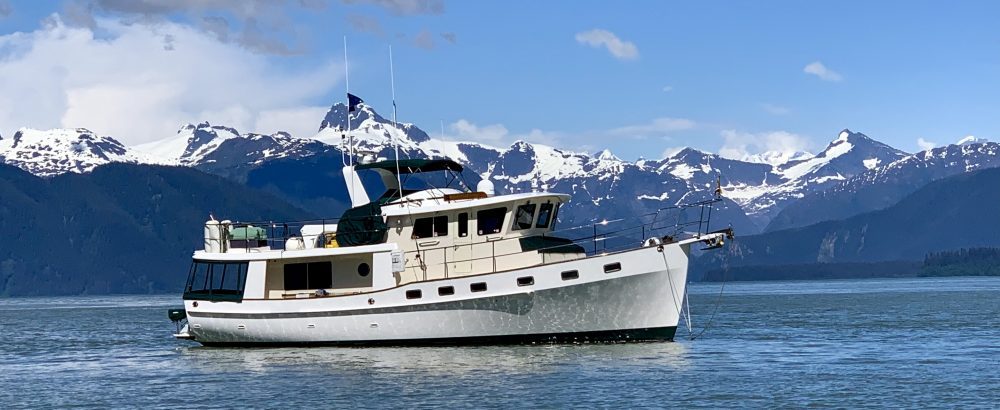
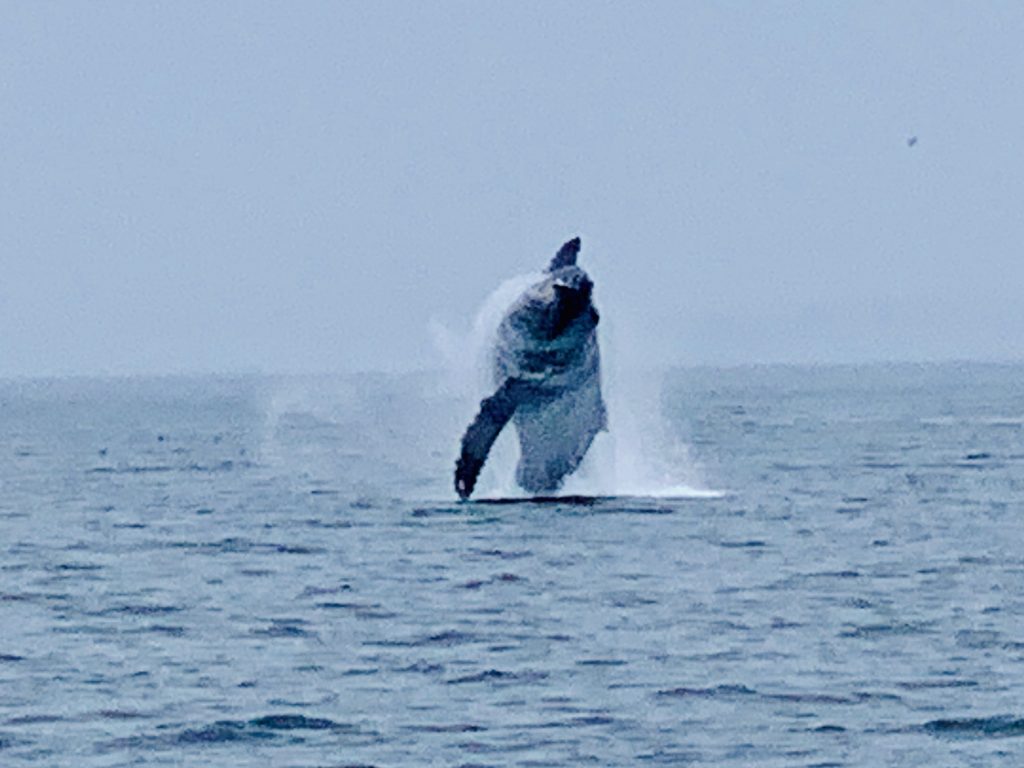
Those of you who have been following our blog know that we spent a lot of time this year cruising the waters of Frederick Sound. This body of water in Southeast Alaska must be traversed by all pleasure craft when leaving Petersburg for points north or west. It is also a busy waterway for both the Alaska ferry system and cruise ships. What we didn’t realize until arriving in Alaska is that this area is world renowned for its concentration of humpback whales during the summer months.
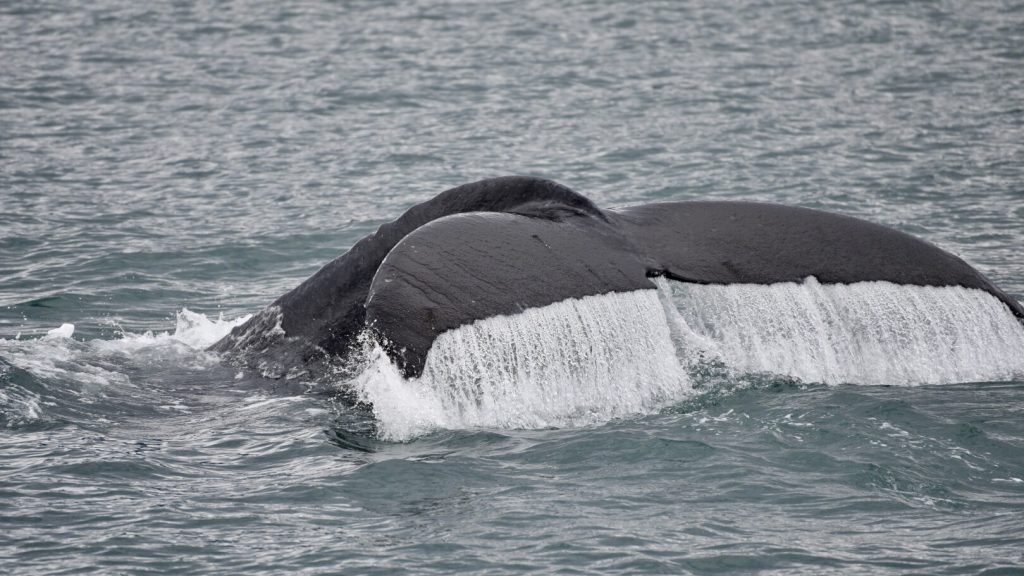
It has been estimated that 5000 to 7000 humpbacks spend their summers in Southeast Alaska . Half of these whales spend time feeding in the nutrient rich ecosystem of Frederick Sound. We certainly saw our share of humpback whales this year. We saw whales almost every day that we were in Frederick Sound. At times we had up to fifty whales around the boat. Whales are federally protected by the Marine Mammal Protection Act which requires boaters to stay at least 100 yards Away. But you can’t always predict where the whales will end up. On several occasions this summer we would shut off the engine and just drift while watching the whales. A surprise surface just feet from our boat happened More than once. It is then that you realize just how big these creatures are.
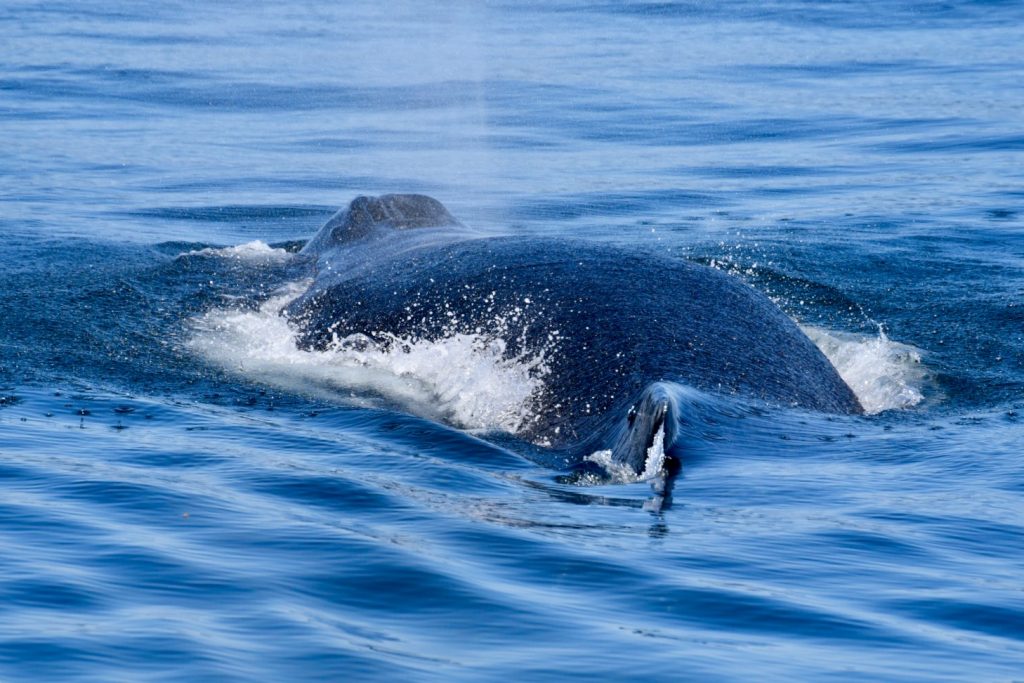
We attended a fascinating lecture while in Petersburg on “The Whale Song” given by Dr. Adam Pack, a renown professor from the University of Hawaii. Dr. Pack has been studying these magnificent creatures for over 30 years. He has been coming here to Frederick Sound for over twenty years to conduct his research. After spending their summers feeding in Alaska, the whales make the 3000 mile journey to their breeding grounds in Hawaii. It is here that the male whales sing what is termed as the “whale song”. While suspended 45-60 degrees head down vertically in the water column, the lone males will spend sometimes hours singing this complex song. What is so fascinating is that the song evolves over the season and each year a new verse is added to the song. All of the whales sing the same song. What the song means is still a puzzle to the researchers. While feeding in the summer, the whales do vocalize but do not sing “the song”. Their feeding vocalizing is more for coordination of hunting for food. The most active vocalization seems to occur during bubble net feeding.
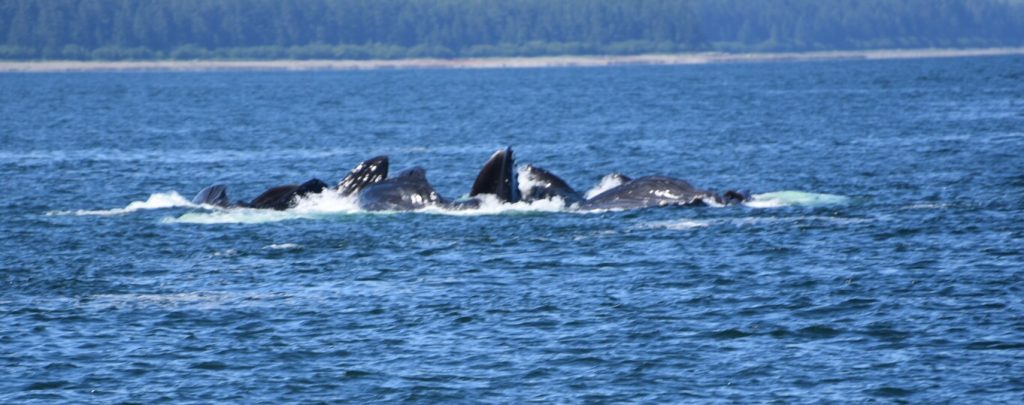
Wanting to learn more about these whale sounds, we purchased a hydrophone this summer . Deploying the microphone down to 60 feet, we were able to drop in on the whale conversations.
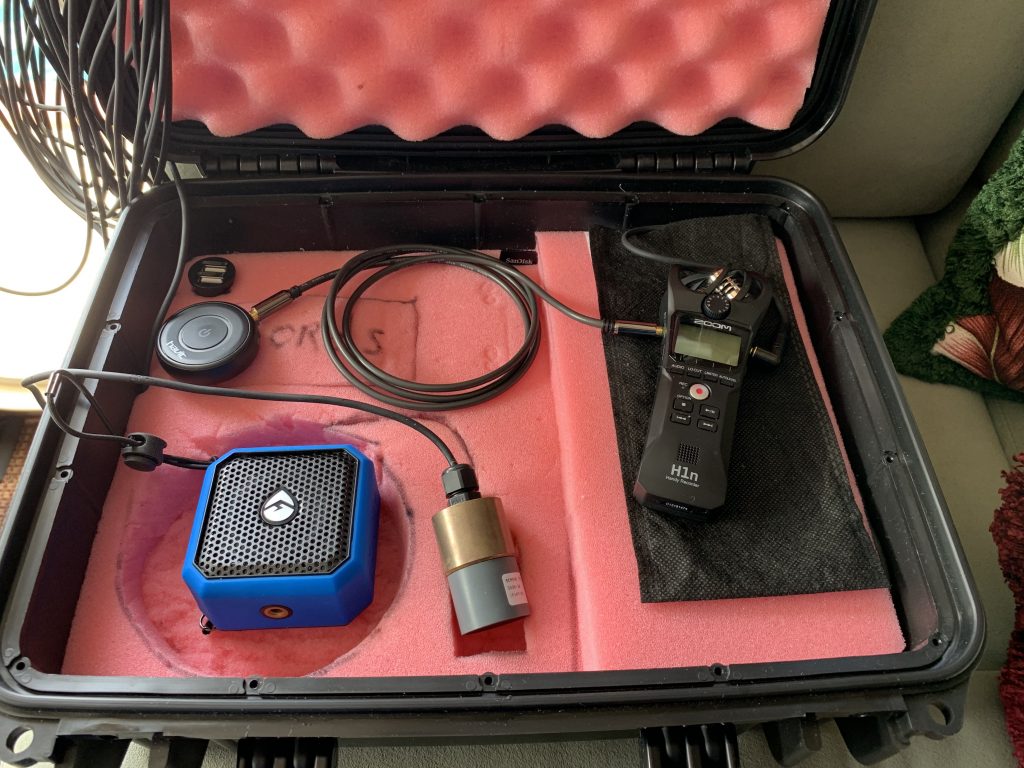
Click on the above triangle to hear some of our recordings.
Our good friends Dick and Bridget on the 42 Krogen Frances Stoughton were able to get a recording while the whales were bubble net feeding. As you can hear, they make a completely different sound during this type of feeding. This is what they recorded:
Happy Whale is an awesome web site that we learned about this year. This site tracks whales throughout the world using data from whale watchers, scientists, and ordinary folks like us. On this site, we can upload photos of our whales. Using state of the art image processing algorithms and their vast data base, they can then identify and track the whales which we have sighted. The primary means of identification are the tail fluke markings. Each whale is cataloged and given an ID # which we can then follow on the Happy Whale site. Two of our whales sighted this year have also been given names due to their frequent sightings.
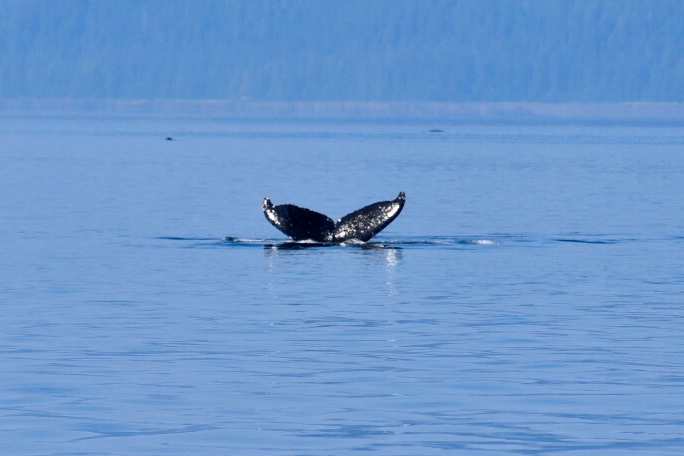
The the above photo is Norio. He was first sighted back in 2007 and has been spotted twenty one times as he travels between Hawaii and Frederick Sound. We also learned through our photo submissions that we spotted him at least twice this year.
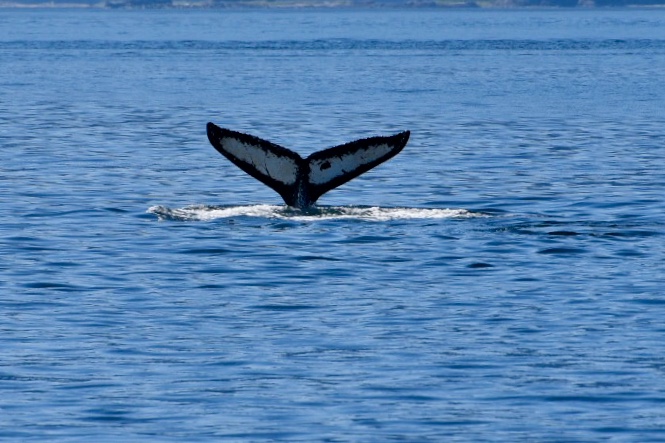
This photo we took in Frederick Sound is Ikabaud. Happy Whale has been tracking him since 2003. He too has been sighted in Hawaii during the winter months.
We are looking forward to many more whale sightings in 2020. Thanks for following along.
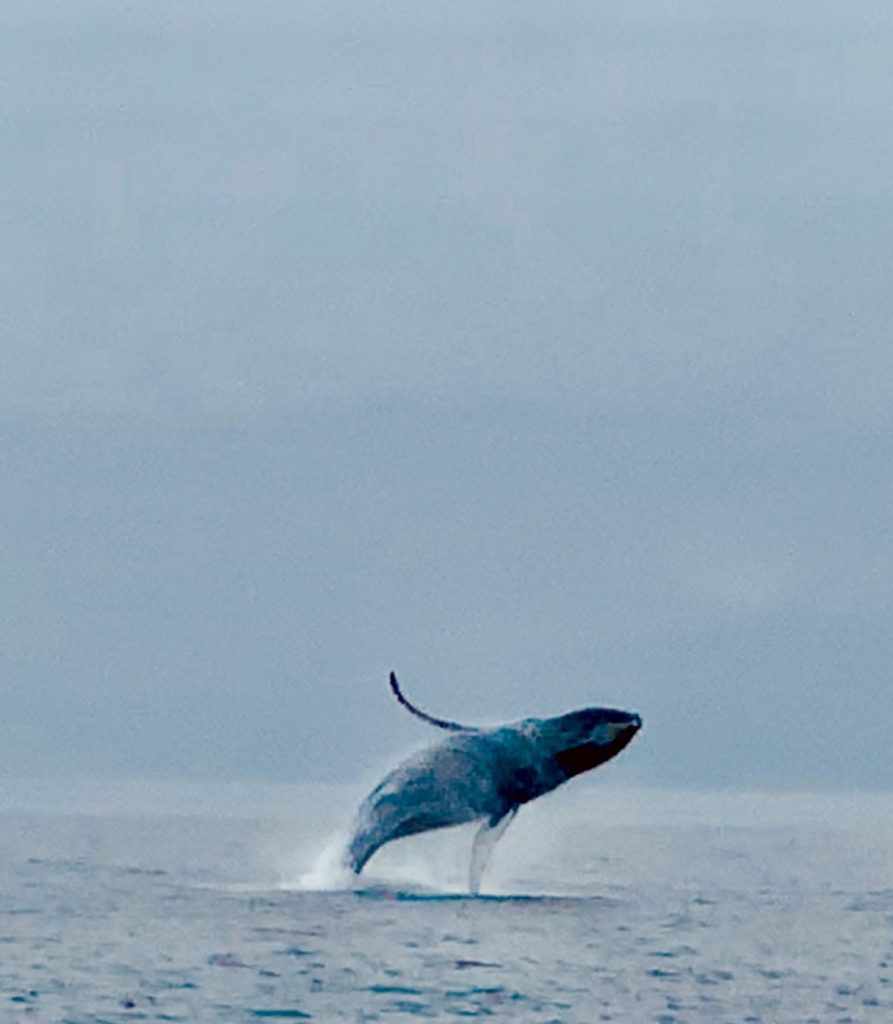
Update 11/21/19: We just had a notification from the Happy Whale app that Ikabaud was sighted off Maui, Hawaii on January 19th. It is good to know he made the long trip safely. Hopefully we will encounter him again next year in Alaska.

I’m just now catching up on this season — it looks as if you had one great one! Thank you so much for sharing your experiences and adventures, especially these particular files of the whale sounds and mention of the Happy Whale site.So very interesting! Have a wonderful winter season – I look forward to rejoining your news next year.